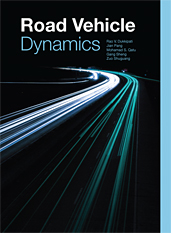Technical Paper
Study on Brake Disc Dynamics under Asymmetric Thermal Loads
2018-10-05
2018-01-1901
In order to explore the generation mechanism of hot-spots on the automotive brake disc, disc tests under non-frictional thermal loads are carried out on the brake dynamometer test bench. In the tests, the oxy-acetylene flame is used as the heat source, and the distribution characteristics of the disc temperature and displacement are measured and analyzed. To confirm the mechanism of the disc deformation, a disc thermal buckling model using finite element method is established, and the key factors for the disc thermal buckling under thermal loads are further analyzed. It is found that the temperature circumferential gradient is small but the temperature radial gradient is large. The disc presents waviness deformation mode with 5th order in circumferential direction, which is the first thermal buckling mode of the disc. A method using spatial frequency spectrum has been proposed to find the critical time and load of thermal buckling.


